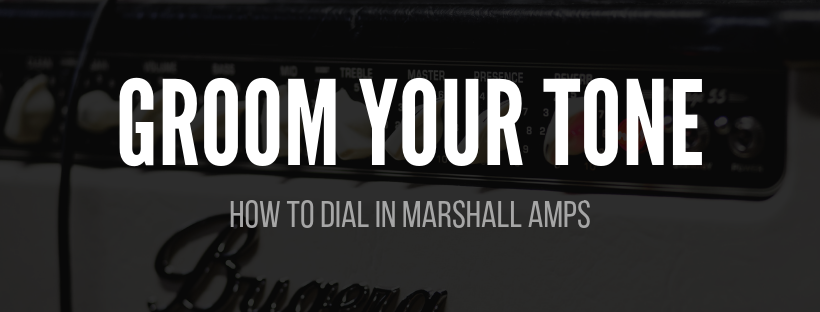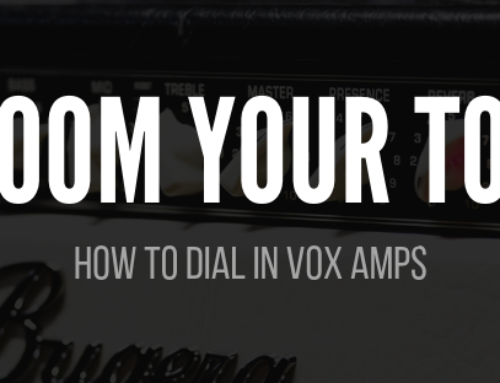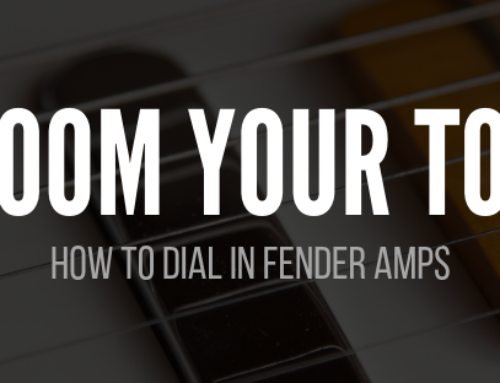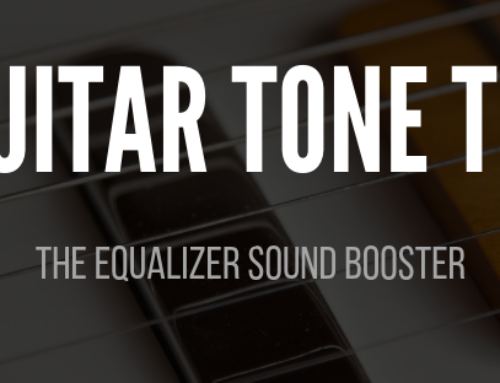Finding YOUR Tone
As guitarists, we are all searching for our sound, but sometimes finding that sound can be elusive. Whether we have to work with a backline that we are not used to, or we are trying to learn how to use a new shiny new toy that we haven’t told the wife about yet, it is important to know how to get YOUR sound out of an amp.
Today, I want to talk about some of the amps that caused rock to “roll”, Marshall amps. Marshall amps are great and have been used by so many legends of guitar. I love cranking my Marshall in the studio, and let my guitar roar until my ears start ringing (which only happens when I forget my hearing protection). But just like any other amp, they are just a vehicle to generate YOUR unique sound.
How Does The Tone Stack Work?
One thing that stands in the way of people and finding their sound is realizing how the tone stack on different amps work. Whether your main amp is a Marshall, or you are using one on a backline, you need to know how it works to dial it in! Contrary to what people say, “all eq’s at noon” does not mean that your tone is unaltered.
Finding The Bassline
In order to find your tone, you need a bassline. Let’s call our bassline a “flat” frequency response. This allows us to hear the guitar tone least affected by the circuitry, and begin to make changes from there. Although “flat” does not mean that it sounds the best, it is a good starting point in order to make changes.
The “all eq at noon” approach is not a good baseline for a Marshall. Let me prove it to you, and show you what it takes to find your sound on a Marshall Amp. Below is a graph that I generated from the Duncan Tonestack Calculator, showing a Marshall tone stack set at noon across the board. You’ll see that it shows a slight Bass and Treble Bump, which is not what we want for a bassline.
The way that a Marshall amp is designed, the tone stack is flattest when Bass is at about .5, Mids are at 10, and Treble is at 0. Don’t believe me? Get the Duncan Tone Stack Calculator and try it out for yourself, or just look at the conveniently placed graph below.
The thing about a Marshall amp is that I hardly ever play one clean. With that said, I often put a treble booster in front of a distorted amp to change the drive characteristics. The cool thing about a Marshall is that when you crank it, and dime all of the tone knobs, it has a built-in treble-boosting phenomenon. It also allows for the most gain to pass through and drive your power tubes. This is a really helpful trick to know if you are looking for a little extra gain out of your amp. Check out what I mean in the graph below.
Find YOUR Sound
Now that you understand the baseline of your amp, you can manipulate it to suit your tonal needs, enabling you to find YOUR unique sound. Have fun and try out new settings! Now that you have a better understanding of how your amp works, you can find new life and inspiration in the gear that you already have!
I hope this was helpful in equipping you to find YOUR sound! If you found this article helpful, please follow Moustache Audio on social media, and take a look at our products here on our website.
At Moustache Audio, we build gear that allows you to dial in something unique to fit your personal playing style. We want to help you groom your tone, and shape it into the masterpiece that you have always dreamed of.







Leave A Comment